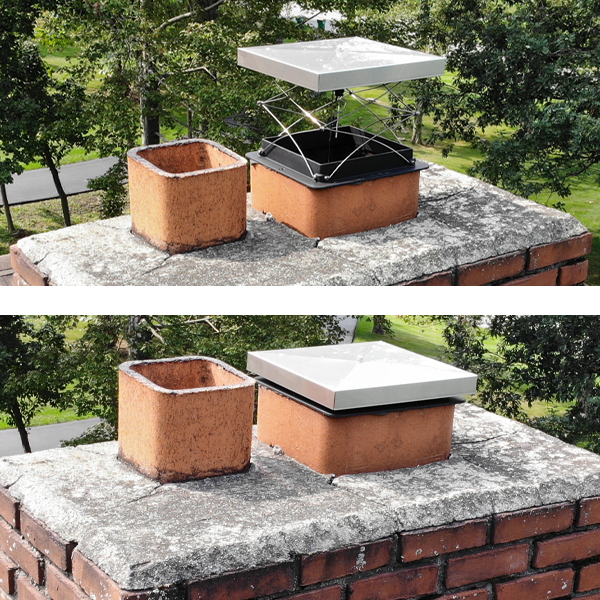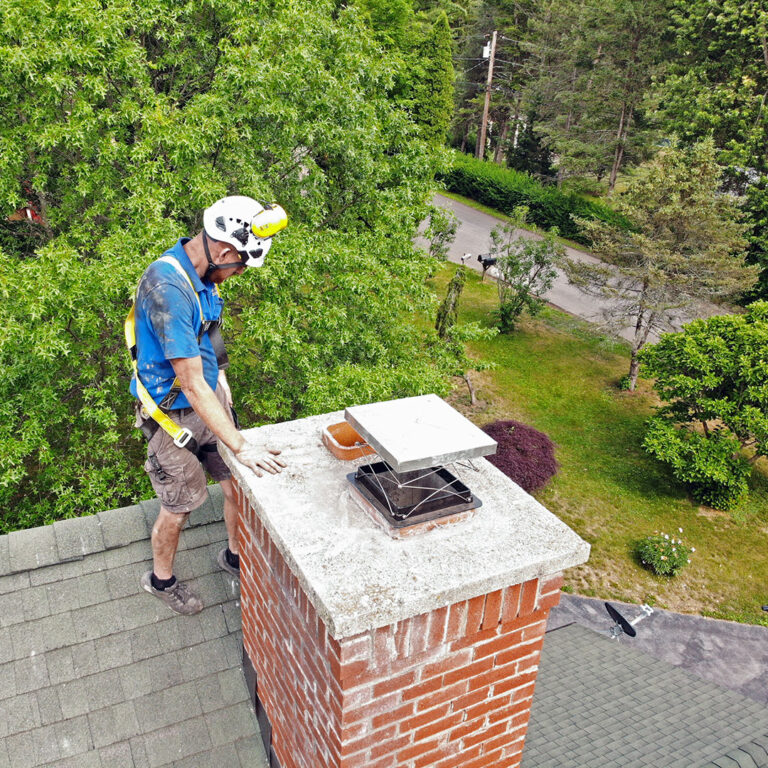How to Use Your Damper Properly
Got a fireplace? Then you’ve got a damper. You might not think about it much—until one cold night when your cozy fire turns your living room into a smokehouse or your heating bill makes you question your life choices.
The good news? With just a little know-how, you can keep things running safely and efficiently. Let’s take a look at what your damper actually does, how to use it, and when it might be time for a replacement.
 What’s a Chimney Damper, Anyway?
What’s a Chimney Damper, Anyway?
A damper is a metal flap inside your chimney flue. You can open or close it to manage airflow. Open it when you have a fire going, so smoke and gases can escape. Close it when the fireplace isn’t in use, so you’re not losing warm air or letting cold drafts creep in.
It’s a simple concept—but using it the wrong way can lead to some big problems.
Tips for Using Your Damper the Right Way
Open It Before You Light a Fire
This one’s non-negotiable. If you light a fire with the damper shut, all that smoke has nowhere to go. Suddenly, your relaxing evening includes coughing, a smoky house, and probably a visit from the smoke alarm. Not ideal.
Most dampers have a lever, knob, or chain to adjust them. Not sure if it’s open? Try shining a flashlight up the flue or checking for a draft with your hand.
Keep It Open While the Fire’s Going
This might seem obvious, but some folks close the damper early, thinking it’ll help trap heat inside. Don’t do it. That just sends dangerous smoke and gases back into your home. Wait until the fire is completely out—no glowing embers, no smoke—before you close it.
Shut It After Everything Cools Off
Once things have cooled down, close the damper to keep your warm air in and outdoor air (and maybe a few critters) out. Just be sure there’s no heat or smoke left lingering before you do.
Don’t Force a Stuck Damper
If it feels jammed or too tough to move, don’t yank on it. You could end up doing more harm than good. It might just need some cleaning or lubrication—or it might be time for a repair. Either way, it’s best to have a pro take a look.
Signs That Your Damper Might Be Done For
Dampers don’t last forever. Here are a few red flags that yours might be on its way out:
It’s Hard to Open or Close
If it feels rusted, warped, or stuck, it may not be doing its job. That’s not just annoying—it’s unsafe.
Drafts Sneak In Even When It’s Closed
A properly sealed damper should block outside air. If cold air’s slipping through, it could mean the seal is worn out, or the damper itself is bent or cracked.
Smoke Comes Inside Even When It’s Open
If you’ve got smoke entering the room despite the damper being open, something’s off. It might be misaligned or partially blocking the flue.
You Notice Rust or Visible Damage
Rust means moisture has found its way in, which can lead to serious issues. Cracks are another bad sign—they can let smoke and harmful gases escape into your living space.
It’s Been There Forever
If your damper has been around since your house was built, it’s probably time for an upgrade. Older throat dampers don’t seal as well as newer models, and switching to a top-sealing damper can make a big difference in both efficiency and comfort.
 Think Your Damper Needs a Checkup?
Think Your Damper Needs a Checkup?
If your damper’s acting up—or if you just want peace of mind before fireplace season hits—get in touch with Northeastern Chimney. We’ve helped homeowners all over central Connecticut keep their chimneys clean and working right. Whether it’s a simple fix or time for a full replacement, our certified team can help.
Call us today to schedule an inspection and make sure your fireplace is ready for the cold months ahead.
The post How to Use Your Damper Properly appeared first on .
This post first appeared on https://www.mychimney.com